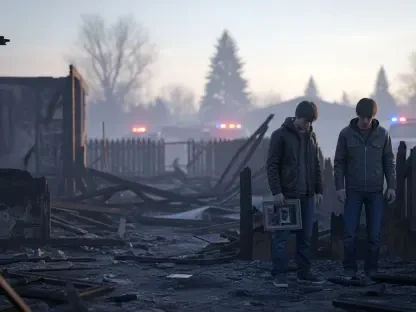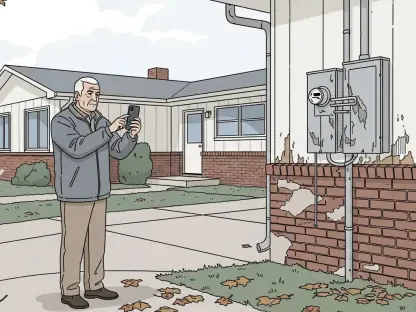What happens when a routine ride turns fatal for a vulnerable senior, leaving a family in grief and a community searching for answers? In a quiet Utah town, a devastating accident on April 25, 2023, claimed the life of Thaes Webb Jr., a resident of Twin Oaks Senior Living, during a transport to a medical appointment. This tragedy has ignited a fierce legal showdown between AIX Specialty Insurance Company and the facility’s operators, Kim’s New Star LLC. The clash raises profound questions about who bears responsibility when care fails and whether insurance policies can shield against such heartbreak. This story delves into the layers of accountability, policy fine print, and the human cost at stake.
A Deadly Journey at Twin Oaks
The day started like any other for Thaes Webb Jr., an elderly resident relying on Twin Oaks Senior Living for support. Transported in a facility-owned van driven by executive director Matthew Cielo, Webb was en route to a medical appointment when tragedy struck. According to allegations in a wrongful death lawsuit filed by his estate, Webb’s wheelchair was not properly secured, causing it to tip over during the ride, resulting in fatal injuries. The incident has left a family shattered and a spotlight on the safety measures—or lack thereof—at the facility.
Beyond the immediate loss, this event has unraveled a deeper narrative of concern. The lawsuit filed in Utah state court doesn’t just focus on the van accident; it points to prior falls and alleged lapses in care at Twin Oaks. These claims paint a picture of systemic issues, suggesting that Webb’s death was not an isolated mishap but part of a broader pattern of negligence. The emotional toll on the family is palpable as they seek justice for what they believe was a preventable tragedy.
Why This Battle Resonates
This case transcends a mere legal dispute; it serves as a critical lens into the vulnerabilities within the eldercare industry. With millions of seniors depending on facilities for daily care and transportation across the United States, accidents like this expose alarming gaps in liability coverage and risk oversight. The clash between AIX and Twin Oaks underscores a pressing reality: when tragedy strikes, the fine print of insurance policies often dictates who pays the price—be it families, facilities, or insurers.
Moreover, the stakes are high for an aging population. According to the U.S. Census Bureau, the number of Americans aged 65 and older is projected to reach 94.7 million by 2060, amplifying the demand for safe, reliable senior care services. Cases like this one highlight the urgent need for clarity in accountability and robust safety protocols. The outcome could ripple through the industry, influencing how facilities manage risks and how insurers define their obligations.
Unpacking the Legal Standoff
At the heart of this conflict lies a battle over insurance coverage. AIX Specialty Insurance Company, which provided policies worth up to $1 million for Twin Oaks from March 16, 2023, to March 16, 2024, argues that its coverage excludes bodily injuries tied to vehicle use by the insured. The insurer also cites professional services exclusions, claiming that transportation incidents fall outside the scope of covered eldercare activities. In filings with a Utah federal court seeking declaratory relief, AIX leans on state precedents that broadly interpret such exclusions to justify their denial.
On the other side, the defendants—Kim’s New Star LLC and associated parties—refuse to accept AIX’s stance. Despite receiving declination letters from the insurer in September 2023 and February 2024, they continue to push for coverage, defense, or settlement. Their argument hinges on the broader negligence claims in the lawsuit, suggesting that systemic care failures at Twin Oaks should override the specific vehicle use exclusion. This disagreement has escalated into a pivotal legal question now awaiting a federal court’s ruling.
The complexity of this dispute reveals a stark divide. AIX maintains that policy language is clear and binding, while the defendants and Webb’s family emphasize the human element—alleged negligence that led to a preventable death. This tension between contractual limits and moral responsibility forms the crux of a case that could set a significant precedent for similar claims in the future.
Perspectives from the Trenches
Legal experts familiar with insurance disputes note that Utah courts have often sided with insurers in cases involving vehicle-related exclusions. One hypothetical industry analyst might comment, “Policy exclusions for transportation incidents are typically airtight, especially when tailored to specific risks like eldercare rather than general liability.” This perspective suggests that AIX holds a strong position, grounded in judicial history, as they seek to avoid liability for the van accident.
Contrasting this, the emotional weight carried by Webb’s family cannot be understated. Their lawsuit details not just the fatal ride but a history of alleged neglect, portraying Twin Oaks as a facility failing its most vulnerable residents. This narrative of loss and betrayal adds a deeply personal dimension to the legal proceedings, challenging the cold logic of policy clauses with raw human grief.
These opposing viewpoints illuminate a broader struggle within the industry. Insurers prioritize contractual boundaries to manage financial exposure, while families and advocates demand accountability for lapses in care. The resolution of this case may hinge on whether the court prioritizes strict policy interpretation or the wider context of alleged negligence at the facility.
Lessons for Senior Care and Insurance Providers
Senior living facilities must take proactive steps to prevent such tragedies from recurring. A critical starting point is a thorough review of insurance policies to identify exclusions related to transportation and other high-risk activities. Ensuring that staff are rigorously trained in securing residents during transport can mitigate potential dangers and strengthen a facility’s defense in liability claims.
Additionally, implementing stringent safety protocols is non-negotiable. Regular audits of vehicle safety measures, alongside documented compliance with care standards, can serve as vital evidence if disputes arise. Facilities should also maintain open communication with insurers to clarify coverage scopes and address gaps well before incidents occur, avoiding the kind of conflict now unfolding in Utah.
For insurers and facilities alike, preparation for legal challenges is essential. Detailed record-keeping and early consultation with legal counsel can make a significant difference in contentious claims. These practical measures not only protect against financial and reputational damage but also prioritize the well-being of seniors who depend on these services for their safety and dignity.
Reflecting on a Tragic Loss
Looking back, the heartbreaking death of Thaes Webb Jr. served as a somber wake-up call for the eldercare sector. The legal battle that ensued between AIX Specialty Insurance Company and Twin Oaks Senior Living exposed critical flaws in how risks were managed and covered. It became a poignant reminder that behind every policy exclusion and courtroom argument lay a human story of loss and a family’s fight for justice.
Moving forward, the industry was urged to rethink its approach to resident safety during transportation. Facilities were encouraged to invest in enhanced training and stricter safety guidelines, while insurers were prompted to offer clearer policy terms to avoid such disputes. Collaboration between stakeholders emerged as a key solution, ensuring that no senior’s life was left vulnerable to gaps in care or coverage. This case, though rooted in tragedy, paved the way for meaningful reforms that aimed to protect the most fragile among society.









